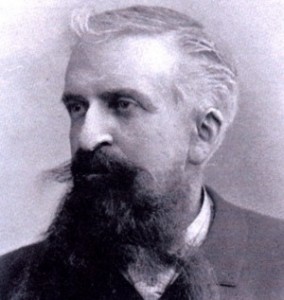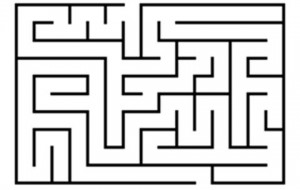In chapter seven titled, “Do sex differences in cognition cause the shortage of women in science?” there was a quote by Gustave Le Bon that really stood out to me. He stated, “A woman represents the most inferior form of human evolution and they are closer to children and savages than to an adult, civilized man”(102). My first thoughts: “I could see why you’re not married.” After I finished reading this ridiculous quote, I instantly felt frazzled and couldn’t contain the anger that was ready to explode out of my head. Savages!? This is blasphemy. Now, I have to keep in mind that he was alive during the late 1800s and early 1900s, which was a time in which women were treated as mere objects. Women during the early 1900s had to fight for rights that we have today. Educating females was thought of as a joke back then because of this belief that females simply did not have the talent. This quote led me to understand that the underrepresentation of women in STEM is not so much due to existing sex differences, but an accumulation of factors that include: gender schema, entity thinking, and willingness to work certain hours. Although sex differences have a contributing factor, there are many other factors that result in the underrepresentation of females in STEM. Let’s start our journey one step at a time explaining this phenomenon.
A brief intro on sex differences
Let’s first talk a little bit about sex differences. The reality is that they do exist; however this should not be a reason to view females as inferior in STEM. In Spelke’s and Grace’s research, they found that “sex differences do emerge at older ages” and females rely more on landmarks, while males rely on geometry. Females and males had different strategies in solving certain math equations, as they got older. It is hard to determine ability through aptitude tests such as the SAT M. Spelke and Grace make a great point by stating that the SAT M systematically under predicts the college mathematics performance of women, in relation to men. Sex difference gave advantage to certain genders. In chapter six, authors Lubinski and Benbow performed a test that showed how cognitive differences in spatial and verbal ability led females to find more interest in the humanities. They demonstrated that verbal, mathematical, and spatial abilities all assessed in early adolescence were related in distinctive ways to subsequent educational vocation. However, there is very contrasting evidence as seen in Dweck’s research. She showed that no such verbal and math advantage really exists and that both were oriented to people and objects. Such contrasting views led me to realize that sex difference is a very ambiguous response to the question Why Aren’t More Women in Math and Science? Regardless, the possible existence of cognitive differences is not a threat to females. In order to better performance and representation of females in STEM, Dweck and Newcombe encourage people to have an incremental perspective. Multiple tests done by Dweck showed how people who thought of talent as malleable performed better than those who believed talent was fixed. Like what Newcombe said, “Acne may exist more in males; however there is no such advantage they get by having more red dots on their faces.” It is the mindset and what females are taught. Sure, there may be evidence that either supports or disproves the idea of cognitive sex differences; however, it’s important to keep in mind that ability is simply something that could be taught through proper guidance and education. This then leads me on to talk about the main contributing factor to the underrepresentation of females, gender schema.
Gender Schema
Gender schema is a result of cognitive sex differences. By analyzing sex difference, people are attaching labels and “handicaps” on females for having certain traits. Gender schema causes people to believe that all females are nurturing, expressive, and behave communally. These traits are not highly regarded in the natural sciences. In an article called Girls in STEM, parents were asked what kind of jobs they thought their daughters would like. And their responses were? They expected their daughters to take on traditional female vocations such “education and child care, the arts, healthcare and hair and beauty.” This shows gender bias from a sub conscious level. To further support my idea, in chapter seven, author Hines found that parents are a contributing factor to the reduced performance of females. Their reduced expectations for their daughter’s performance in math and science led to reduced performances. This reduced expectation is a result of gender schema. Through this data I am able to conclude that gender schema is one of the main contributing factors to such underrepresentation. Sadly, it doesn’t stop here because gender bias leads to a gradual build up of entity thinking.
Entity Perspective
Through gender bias, a lot of females are left vulnerable and begin to think from a very negative perspective. In a study done by Dweck, she found that entity thinkers are more susceptible to stereotypes, leading to the gradual decline of females in STEM. As a result of gender schema, there is this automatic bias that females receive even before they get a chance to work. In chapter four, Spelke and Grace describe a bias that occurs when professional men and women were evaluated. Women were found to receive less postdoctoral fellowships than males. This discourages many females and they are led to give up because of this gender stereotype. We are continuously seeing capable females. Sex difference is no longer a factor that could explain such underrepresentation. We have smart females who are capable; however, it is also the mindset and willingness to endure bias in the work field. Both Marti Head and Becky Hyde are great examples of incremental thinkers who refused to be affected by the stereotypes that surrounded them. They never gave up and pushed through their efforts. In chapter seven, Hides showed how students who were told they would blossom academically ended up performing well. This shows how encouraging female students could be a helpful guide in building up more female representation in STEM.
Working Hours
The final underlying factor of underrepresentation is due to females being unable to work long hours. There is a quote in chapter six that states, “In STEM areas, taking a leave of absence for a number of years is possible, but doing so reduces significantly the probability of achieving a high impact leadership role in subsequent employment.” Authors Lubinski and Benbow found that males worked longer hours and were more willing to work longer hours. Females showed the opposite results. In an article from the Pew Research Center, there was a chart that showed how children preferred stay at home moms rather than a stay at home dads, which shows a possible reason for why females aren’t willing to work longer hours. One of our speakers, Becky Hyde, mentioned how it was not possible to have the best of both worlds. She was lucky to have a husband that was supportive enough to help Becky manage her family and work life. My reasoning does seem to make sense; however, there is other conflicting data that shows how females work longer hours and accomplish just as much as females without a family. This information disproves my idea that, working shorter hours is a cause of female underrepresentation in STEM. Valian makes a great point, but she fails to show any data, which leaves me unwilling to support her idea.
Conclusion
We can’t simply blame sex differences for the underrepresentation of females in STEM. Females have the ability and talent; otherwise, we wouldn’t be seeing any female scientists. The reason for a woman’s underrepresentation in STEM is like a maze. There are complex reasons and no one explanation for such underrepresentation. In conclusion the combination of gender schema, entity thinking, and working hours results in the underrepresentation of female in STEM. However, like most mazes, there is always an end. In order for us to reach the end of the maze, we have to simply encourage females and stop telling them that sex differences matter.
Link sources:
http://www.ibtimes.com/girls-stem-parent-stereotypes-may-discourage-daughters-science-technology-engineering-1895719
http://www.pewsocialtrends.org/2014/06/05/growing-number-of-dads-home-with-the-kids/
Image sources:
(Gustave image) https://commons.wikimedia.org/wiki/File:Gustave_Le_Bon.jpg
(Gender Schema image) http://juniaproject.com/gender-stereotypes-we-can-do-better/
(Negative/Positive image) http://www.aacc.net/2015/07/03/overcoming-negativity-and-learning-to-let-go/
(Clock image) http://victorygirlsblog.com/ahmedmohameds-clock-lesson-see-something-say-nothing/
(Maze image) http://scnfamily.org/old/youth/maze/index.html




